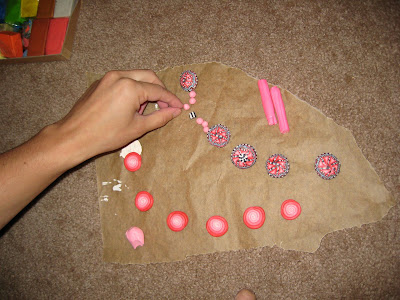Well, I had all but forgotten that article when I started watching Cooking in Concert, so I was pretty thrilled to see Jacques bone out a turkey, and stuff it with forcemeat. The only thing that made me nervous was that he roasted it for "about an hour and three quarters at 425 degrees," and if it browns too fast, loosely tent some tin foil over the top. 425?! Only two hours?! Well, I did a lot of web searching and found that most recipes recommends 30 minutes at ~425 and then like 3 hours at ~350. Jacques has never failed me, but, most of America is convinced that you have to lower the temperature after 30 minutes. Who was right? Well, some really extensive googling turned up an article about the recent history of turkey cooking techniques. I wish I had bookmarked it. Anyway, this article claimed that pre-WWII recipes generally roasted at a high temperature, and that post-WWII it started to be in vogue to roast at a lower temp. Both schools of thought claim that their method results in the juiciest turkey. The high-temperature group claims that minimizing time in the oven is the key to preserving moisture, and the low temperature group claims that the key is keeping a low temp so less water evaporates. The author of the article had cooked turkeys using both methods, and claimed that high temp was the way to go. Well, I wasn't looking for the results of an experiment, I just wanted to find one other person who had made the high-temperature method work.
We did not take pictures, but I am recording my recipe here. It is loosely based on the one I saw on the video. I certainly liked the results. I think that the pistachios are key, and its always nice to have some organ meat in a stuffing.
- Make at least 2 C bread crumbs and shuck 3/4 C pistachios.
- Bone out a 12-lb turkey.
- chop an onion, a leek, a lamb kidney, and about 1 C parsley.
- Sauté the onion until translucent in 3T fat, add the kidney and brown, add 1/4 C tequila and flambé. Place the kidney and about 1/2 of the onions into a food processor and chop finely.
- sauté the leek until translucent, about 3 minutes.
- mix together pistachios, 3/4 lb sausage meat and 3/4 lb ground pork. Add 2 Tb tequila, the parsley and vegetables and kidney and mix well. Add 1 tsp salt, and some pepper and some ground allspice.
- Immediately before stuffing add 2 eggs and enough bread crumbs to make a paste.
- Season the inside of the turkey lightly with salt and pepper, stuff the turkey. tie with string.
- Rub the turkey skin with tequila.
- Bake, breast side up at 425F for about 2 hours, until the turkey meat and the internal temp is at least 165F. Let rest for at least 30 minutes before slicing.























